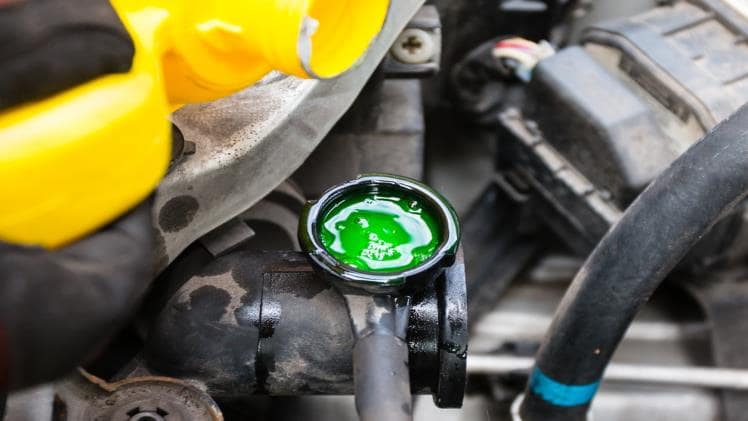Keeping your car’s fluids topped up and clean is important for safe driving. When it comes to coolant, in addition to following your vehicle’s recommended maintenance guidelines you should also watch for signs of concern. That way you’ll know to update your coolant to avoid any major cost and safety issues.
Signs of Failing Coolant
Fortunately, there are some telltale signs of coolant issues that allow you to take action before it’s too late. For instance, a sure indicator of low or failing coolant is engine overheating. Get in the habit of looking at your temperature gauge each time you start up your ride and replace your coolant right away if you’re running too hot.
Check periodically beneath your car for leaks, but bear in mind that a pool of brightly colored fluid may also result from coolant overflow if you recently added too much. Another sign of potential leakage is a sweet smell coming from underneath the hood. Some people liken the odor to pancake syrup or candy, but that pleasant scent can alert you to a coolant problem. You should also pay attention to the noise your engine makes while driving; grinding, knocking, or gurgling sounds often indicate coolant backflow.
How To Find Quality Coolant
You need a periodic coolant flush to clear out the old fluid along with any other debris that’s accumulated inside your radiator. Visit a trusted auto supply retailer to find the best option for the make, model, and age of your car. To ensure your radiator runs safely at virtually any temperature, you’ll likely receive a recommendation for an antifreeze/coolant combination.
Bear in mind that while store shelves are stocked with a variety of coolant colors, this isn’t a marketing ploy meant to catch your eye. Different colors correlate to different compatibility, but to be sure you’re getting the right option always check the label and not just the hue.
What Can Go Wrong if You Don’t Update Your Coolant
If you suspect a coolant issue, don’t wait too long to address it. Costly, and even dangerous, problems may result from running without proper coolant.
Overheating in and of itself can cause expensive damage to your engine. Even a single blown head gasket will set you back at least $1,000 to repair. Beyond cost, with low coolant levels, your car’s automatic shut-down system may kick in. While this protects the engine, it’s hazardous for your vehicle to shut off when you’re driving at high speed or in heavy traffic. That alone makes it too risky to ignore signs of coolant trouble.
By paying attention to signs your coolant is failing and then updating it with the right product for your vehicle, you can save a lot of cost and heartache when driving your car. Visit a trusted auto parts retailer in person or online today to get a fresh bottle of antifreeze and coolant for your car. With just a little bit of upkeep, you’ll keep your radiator from overheating so you arrive safely at your next destination.

